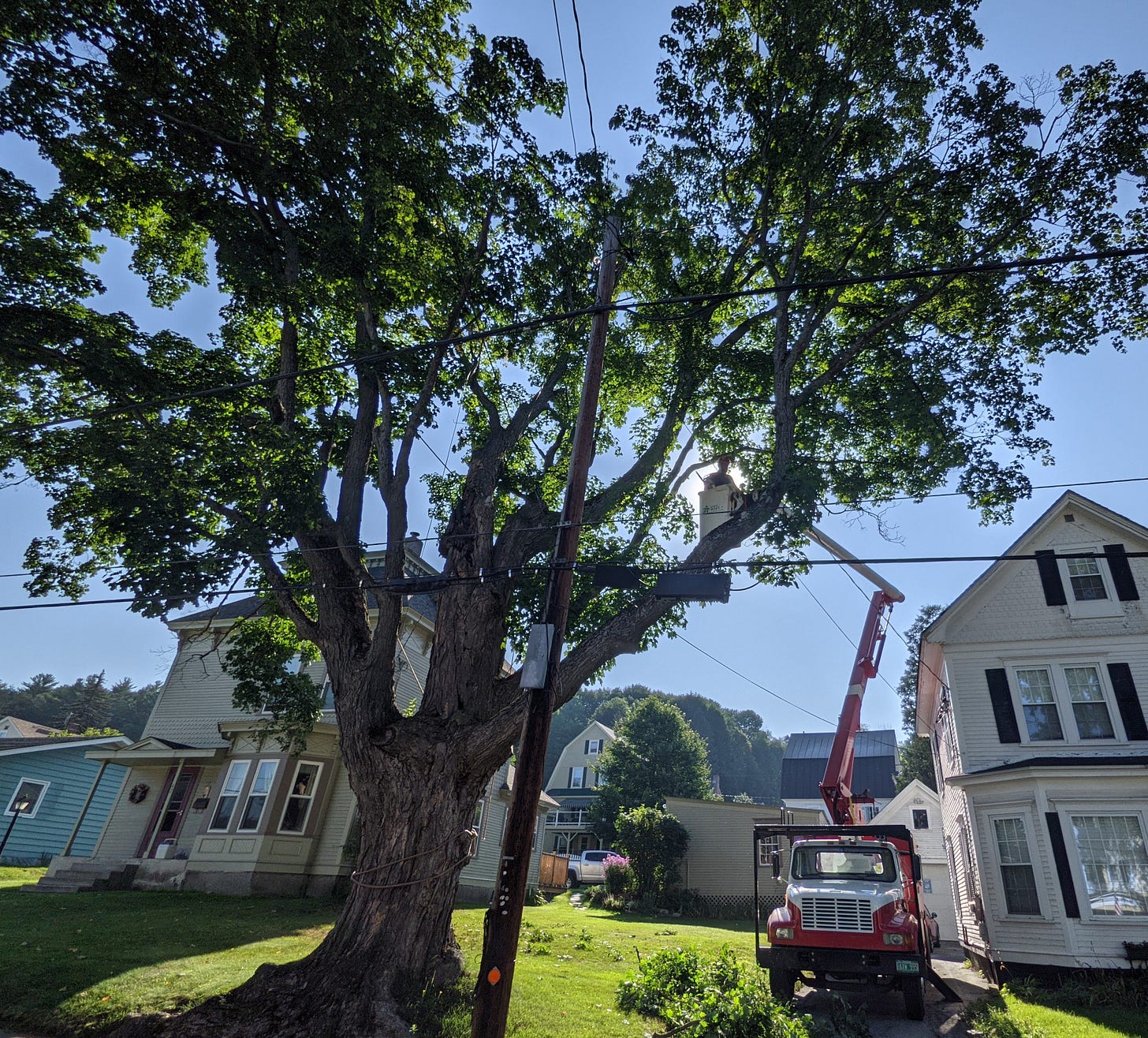Jake Brakes and Pony Motors
One of the unexpected parts of my job as an apprentice arborist — and one my inner four-year-old is stoked about — is the amount of time spent in and around big, diesel-powered trucks. Hauling live trees, logs and wood chips isn’t easy work for a motor, nor is towing a 4-ton wood chipper, so we have some horsepower around the equipment yard. Two things I’ve learned about these trucks have stuck with me, in part because of their funny names, but also because of their ingenuity.
First, the Jake Brake. You know what these sound like, even if you’ve never driven anything larger than a Prius. It’s the big, belching engine brake sound that tractor trailers sometimes make as they’re slowing down. It sounds like the engine is revving way up because it is. What I didn’t realize before is that this isn’t just truckers downshifting to make the engine slow them down — there’s actually a switch in the cab that activates the compression release engine brake, AKA “Jake Brake.” That changes the timing of the engine’s exhaust valves in a way that causes drag on the engine, slowing it down.
And no, it’s not named for some guy named Jake whose exhaust was really loud. The Jake Brake was actually invented by Clessie Cummins — that’s the same Cummins name that you see on of lots of Dodge & RAM trucks; kind of the Babe Ruth of diesel engines — and first commercialized by a company called Jacobs Vehicle Systems, hence the moniker “Jake Brake.”
That’s a pretty long explanation for a high-powered fart noise, but I hope you enjoyed it nonetheless.
Second, the Pony Motor. Plenty of work trucks have powerful functions other than turning the wheels to move down the road. Bucket trucks lift the weight of their buckets and operators, dump trucks lift thousands of pounds using hydraulics, garbage trucks pick up dumpsters and trash bins, and cooler trucks refrigerate boxes larger than my kitchen. All of that takes lots of energy, but it often doesn’t require the hundreds of horsepower needed to drive the truck. That’s where pony motors come in. Some of these trucks actually have two internal combustion engines on board: the main, under-the-hood motor that drives the wheels and a secondary, smaller “pony motor” to power the auxiliary functions.
It might seem silly and inefficient to put two motors in a vehicle when one motor can do all the work, but some of the trucks that we use spend 90 minutes on the road in a day and four to five hours running their extra functions with the motor on. In those situations, a small motor using only the fuel needed makes a whole lot of sense to me.
In a much smaller scale, BMW is using a fancy little pony motor in its new electric i3 — those little ones that look like smart cars. It’s a gas powered motor that’s not at all connected to the wheels, which is probably good because it’s only a two-cylinder, 647-cubic-centimeter unit. That’s only enough to drive a mid-sized motorcycle using conventional systems, but this one only serves as a generator to charge the i3’s batteries when they get low. Pretty cool.
On an unrelated note, apologies for the lack of writing here. This new job is very busy and leaves me very tired, but I’m learning tons and having lots of fun in the process. Not to mention driving cool trucks.



